When it comes to growing garlic, perhaps the trickiest part is knowing when to harvest the plants. Also, there are several different points in its life cycle where different parts of the plant can be harvested. Understanding the growth stages can help you take your garlic growing to the next level and can make for many tasty dishes.
We recommend that you also check out our guide on starting an herb garden.
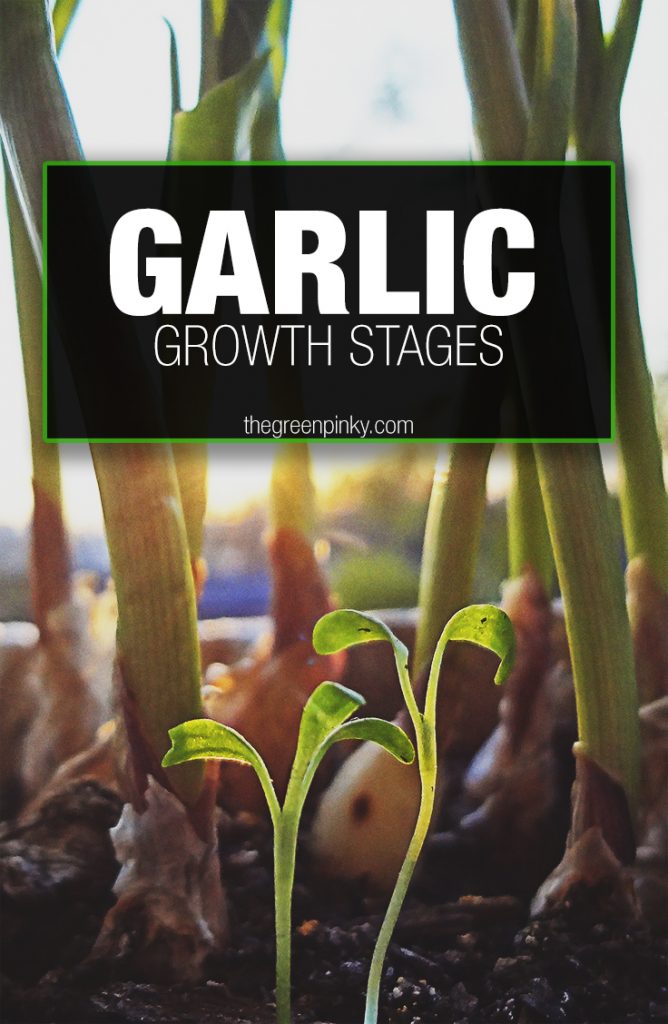
Days to Maturity
Depending on the type of garlic you have planted, bulbs will take about nine months from planting to fully mature when grown from a clove. If you’re in a region that works well for growing softneck varieties, you could plant in the spring and harvest about three months later. However, the cloves will be much smaller.
It’s generally best to plant in the fall. The cloves should be planted between three and eight weeks before the first freeze. When planted in the fall, softneck varieties will continue growing throughout the winter. Hardnecks will go dormant during the winter and continue growing in the spring, but the freeze is essential for larger, healthier plants. Both hardneck and softneck varieties planted in the fall can be harvested the following spring or summer, depending on the region.
Gardeners can also choose to grow from the seed, which is not the same as “seed garlic”, which is actually a clove. Garlic seeds are the actual seeds of the plant, produced in a bulbil when the plant is left to flower. Growing from seed takes even longer than growing from the clove, however. Gardeners will usually need to wait an additional year or two before they can harvest if they grow from seeds.

There are six major growth stages. They are:
- Germination
- Green or Spring Garlic
- Scapes
- Young Bulbs
- Mature Bulbs
- Flowering Stage
Review of the Major Stages
Germination
The first stage after you’ve planted a seed is germination, or when the seed sprouts. It typically takes between one and two months to germinate. At this point, you should see tiny green fronds sticking up through the soil or mulch.
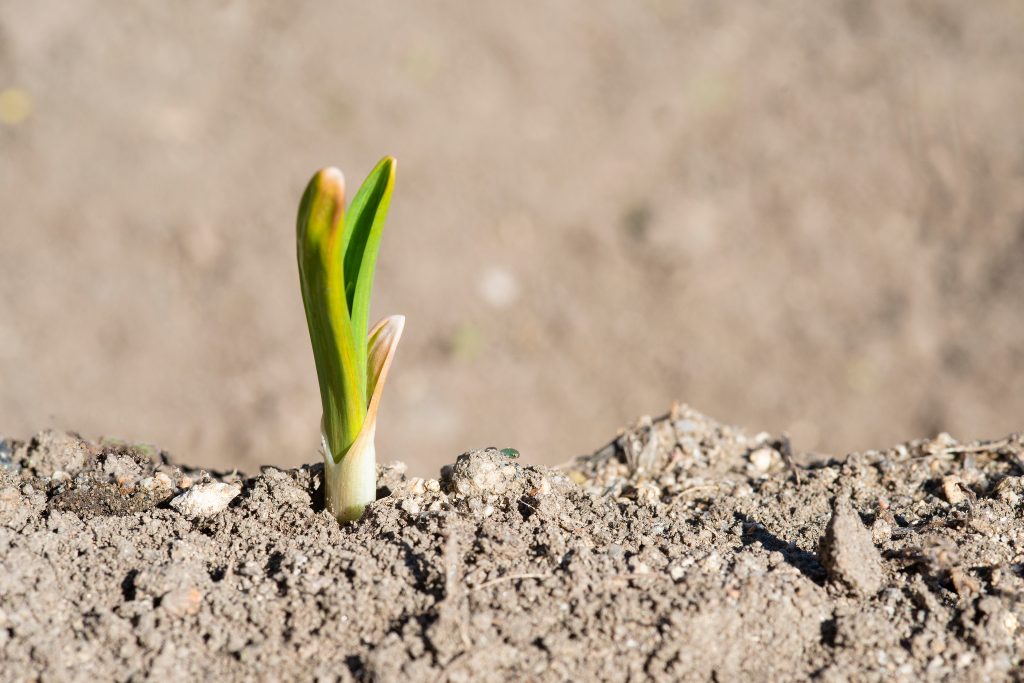
Green or Spring Garlic
After about seven months, the garlic plants will have grown quite a bit and will have long green leaves. At this point, you can potentially harvest it if you want. It can be pulled right out of the ground.
If you do this, you will notice that the harvested clove will not be fully matured, and, often, the bulb has not grown into a recognizable shape. Because it’s so fresh and because the skin has not dried yet, spring garlic doesn’t store as well as its mature counterpart. It should be eaten or frozen within a week.
When using green garlic, cut off the roots and the darker green leaves, and use the bulb and the white and pale green parts of the shoot. The dark green parts can be used in stocks.
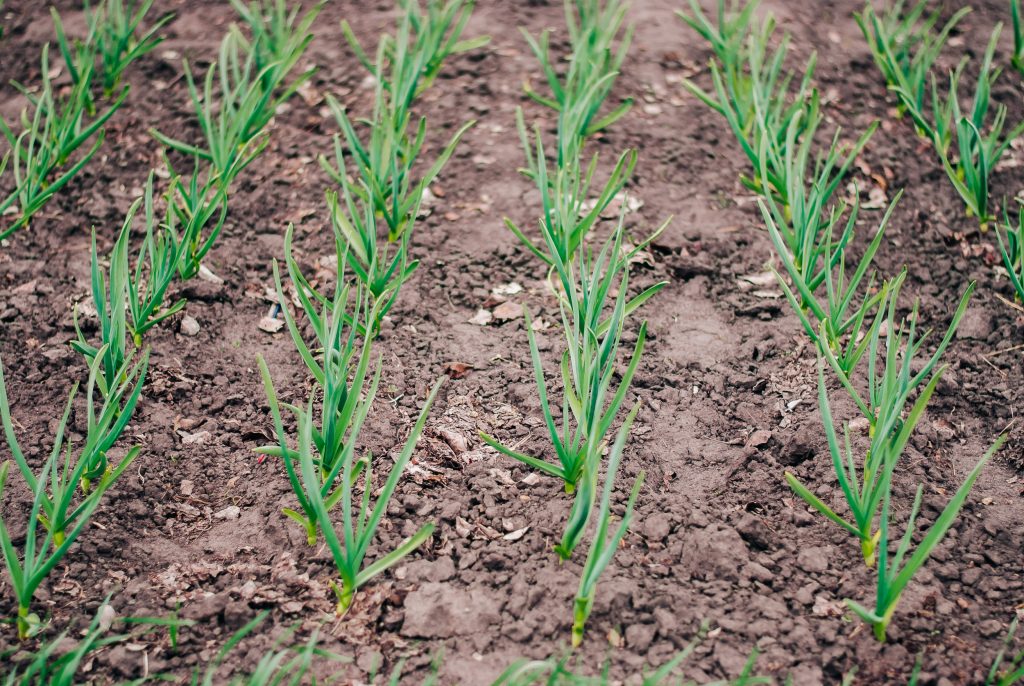
You may also be interested in our article about the meaning of different tulip colors.
Scapes
After another three to four weeks, scapes should appear. These small tendrils are easily recognizable because they have a distinct curl to them. If left untrimmed, the scapes will eventually flower and produce bulbils. While some gardeners seek to grow bulbils, others trim the scapes. Leaving the scapes untrimmed redirects the plant’s energy into producing seeds and flowers. This means that plants that haven’t had their scapes trimmed produce smaller bulbs and cloves.
Scapes are also edible and can be used the same way you would use cloves. Like green garlic, they should be eaten within a week or should be frozen.

Young Bulbs
Young bulbs, also known as fresh garlic, can be harvested about eight months after planting. These bulbs will be smaller, and the skins will not be as dried out as mature garlic. However, young bubs have a crisp, juicy taste and texture and add a strong flavor to dishes.
Young bulbs should be eaten within about a week, but it can also be chopped and frozen.

Mature Bulbs
At about nine months, the mature garlic bulbs should be ready to harvest. Again, you can pull the entire plant out of the ground. You should have large bulbs at this stage, perfect for drying.
To cure your cloves, lay it on a well-ventilated rack for between one and two weeks. The skin of the bulb will have already begun to dry out in the soil, but this process ensures that it will remain fresh and edible for as long as possible.
Flowering
Simultaneously, as the mature bulb is ready to harvest, any scapes that have been left untrimmed will begin to straighten, and a flower will form. You may also want to leave a scape or two untrimmed on a few plants, as the growth of a flower is a good indicator that all of the plants are ready for harvesting.
Many people allow some or all of their garlic to flower, either because the flower itself is an attractive addition to the garden, or because they want to produce seeds.
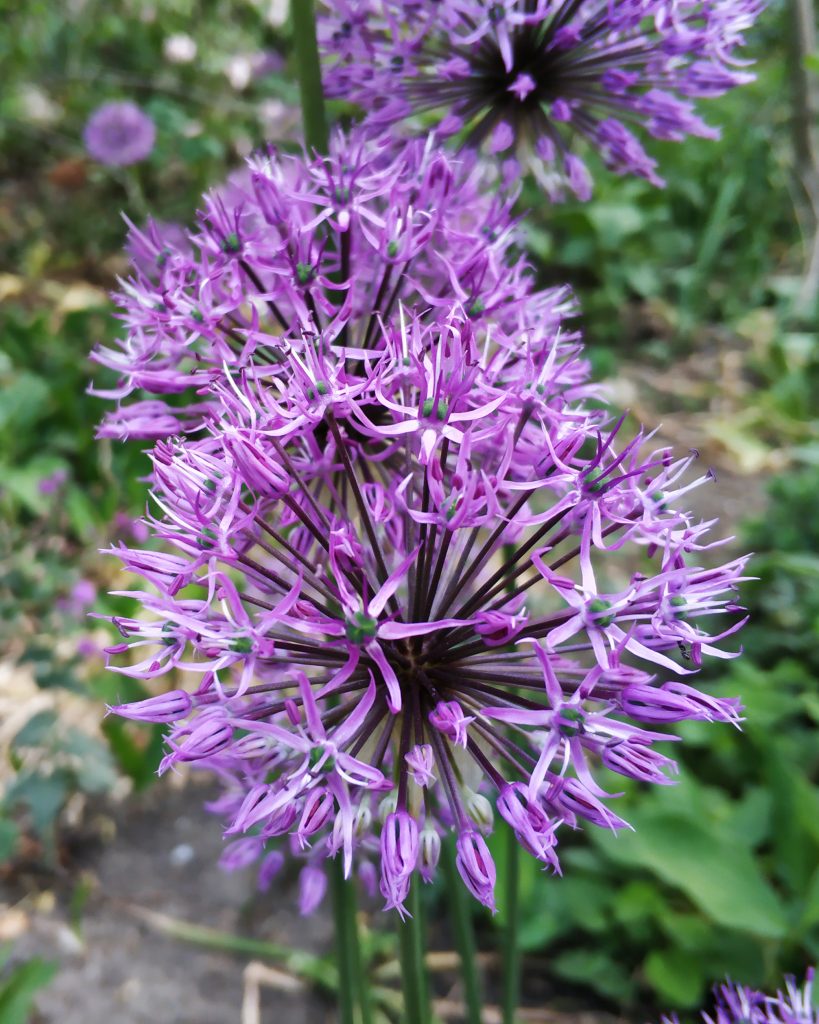
If left in the ground, many varieties will die back after they have flowered. However, most will regrow from the bulbs underground the following year. If harvested, these bulbs will be much smaller than usual, but they’ll have an excellent flavor.
Growing garlic isn’t complicated, but harvesting can sometimes be confusing. Luckily, almost every part of the plant is edible and can be eaten at different stages. As you get a feel for a garlic plant’s life cycle, you’ll learn exactly when to harvest, and you should have delicious garlic all year round.

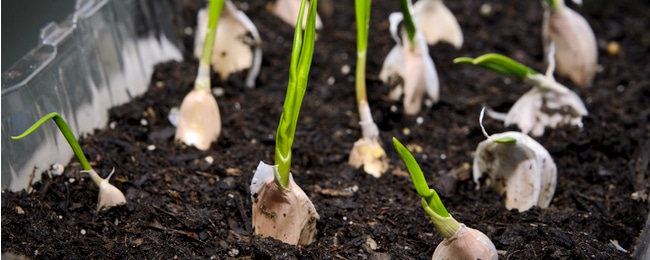
Very helpful thank you. Due, I think to the huge amount of rain in April, there are loads of scapes on my garlic.
We freeze the cloves whole and they last all year.